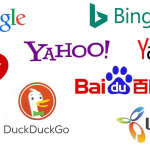Performance marketing has emerged as a powerful strategy for businesses to drive measurable results and maximize their return on investment (ROI).
Table of Contents
What is Performance Marketing?
Performance marketing is a type of online marketing in which advertisers pay marketing companies or advertising platforms based on specific actions completed by users, such as clicks, leads, or sales, rather than impressions or ad placements. This results-driven approach has transformed how businesses allocate their marketing budgets and measure the effectiveness of their campaigns.
The growth of performance marketing can be attributed to several factors, including the proliferation of digital channels, advancements in tracking and attribution technology, and the increasing demand for accountability and transparency in advertising spend.
Performance marketing spending in the US is expected to reach $8.25 billion by 2024, growing at a compound annual growth rate (CAGR) of 11.3% from 2019 to 2024.
Forrester Research
How is Performance Marketing Different?
Performance marketing starkly contrasts traditional brand marketing, which focuses on building brand awareness and engagement through tactics such as TV commercials, print ads, and sponsorships. While brand marketing aims to create emotional connections and influence long-term consumer perceptions, performance marketing is laser-focused on driving specific, measurable actions that directly impact the bottom line.
One of performance marketing’s key distinctions is its emphasis on pay-for-performance pricing models. Unlike traditional advertising, where advertisers pay for ad impressions or placements regardless of outcomes, performance marketers only pay when specific actions are completed, such as a click, lead, sale, or app install. This pricing structure aligns the interests of advertisers and publishers, ensuring that both parties are motivated to drive the best possible results.
Performance Marketing Channels and Formats
Performance marketing encompasses a variety of ad formats designed to drive specific actions and outcomes. Some of the most common formats include:
- Affiliate Ads: Affiliate ads are placed by affiliate marketers who promote a business’s products or services and earn a commission for each resulting sale or action. These ads can take various forms, such as text links, banners, or product reviews, and are typically found on websites, blogs, or social media platforms.
- Display Ads: These are visual advertisements on websites, apps, or social media platforms. Display ads can include images, text, or rich media and are often targeted to specific audiences based on demographics, interests, or behaviors.
- Email Ads: Email ads are delivered directly to users’ inboxes and can include promotional messages, newsletters, or sponsored content. They can be targeted based on factors like previous engagement, purchase history, or demographic information.
- Native Ads: Native ads are designed to blend seamlessly with the content of the platform on which they appear. These ads match the form and function of the surrounding content, providing a less disruptive user experience while still driving engagement and conversions.
- Programmatic Display Advertising: Programmatic display advertising uses automated systems to purchase and serve display ads across various websites and platforms. This data-driven approach allows for real-time bidding and advanced targeting, enabling advertisers to reach their desired audiences more efficiently and effectively.
- Programmatic Media Buying: Programmatic media buying is an automated process of purchasing ad inventory across multiple digital channels, including display, video, social media, and mobile. This approach leverages data and algorithms to optimize ad placements, targeting, and bids in real-time, maximizing the performance of advertising campaigns.
- Search Ads: Search ads appear on search engine results pages (SERPs) when users query specific keywords or phrases. These ads are typically text-based and are positioned above or below the organic search results, driving targeted traffic to the advertiser’s website.
- Social Media Ads: Social media platforms like Facebook, Instagram, X, and LinkedIn offer a range of ad formats, including sponsored posts, display ads, and video ads. These ads can be targeted to specific audiences based on detailed user data, allowing for highly personalized and effective campaigns.
- Video and Connected TV (CTV) Ads: Video ads can appear on various platforms, including social media, video-sharing sites, and streaming services. CTV ads are served on internet-connected televisions and can reach audiences consuming content through apps like Hulu, Roku, or Apple TV. These ads offer high engagement and can be targeted based on viewing habits and demographics.
Performance Marketing Benefits
Performance marketing offers a range of compelling benefits for businesses, making it an increasingly attractive strategy in the digital age:
- Audience Reach: Performance marketing channels offer extensive reach, enabling businesses to connect with consumers across a wide range of digital touchpoints. By diversifying their performance marketing mix, advertisers can engage audiences at multiple stages of the funnel and maximize their impact.
- Customer Acquisition: Performance marketing drives new customer acquisition by targeting consumers actively searching for or interested in a business’s products or services. Advertisers can efficiently reach and convert high-quality prospects by leveraging intent-based targeting and personalized messaging.
- Brand Awareness: While performance marketing primarily focuses on driving specific actions, it can also help to boost brand awareness as a secondary benefit. As consumers engage with sponsored content, ads, or emails, they become more familiar with the brand and its offerings, leading to increased recognition and recall over time.
- Measurability and Optimization: One of the greatest advantages of performance marketing is its measurability. With robust tracking and analytics tools, businesses can monitor the performance of their campaigns in real-time, tracking metrics like clicks, conversions, cost per acquisition (CPA), and return on ad spend (ROAS). This granular insight allows for continuous optimization, ensuring campaigns become more efficient and effective.
- Pay for Results: With performance marketing, advertisers only pay when specific actions are completed, ensuring that every dollar spent drives measurable results. This model helps businesses to minimize wasted ad spend and allocate their budgets more effectively.
- Scalability: Performance marketing allows businesses to scale their advertising efforts based on real-time results. By monitoring key performance indicators (KPIs) and adjusting bids and budgets accordingly, advertisers can quickly ramp up spending on high-performing campaigns and channels while dialing back on underperforming ones.
Measuring Performance Marketing Success
To fully capitalize on the benefits of performance marketing, businesses must have a clear framework for measuring and optimizing their efforts. This involves defining key performance indicators (KPIs), implementing tracking systems, and leveraging testing and optimization techniques.
Common Performance Marketing KPIs
- Click-through rate (CTR): CTR measures the percentage of users who click on an ad after viewing it. It is calculated by dividing the total number of clicks by the total number of ad impressions.
- Conversion rate (CR): The conversion rate measures the percentage of users who complete a desired action, such as purchasing or filling out a form, after clicking on an ad. It is calculated by dividing the total number of conversions by the total number of clicks.
- Cost per acquisition (CPA): CPA refers to acquiring a new customer or conversion. It is calculated by dividing the total cost of the advertising campaign by the number of conversions or sales generated.
- Cost per click (CPC): CPC is the amount an advertiser pays each time a user clicks on their ad. It is calculated by dividing the total cost of clicks by the total number of clicks received.
- Cost per lead (CPL): CPL measures the cost of acquiring a lead, such as submitting a form or signing up for a newsletter. It is calculated by dividing the total cost of the advertising campaign by the number of leads generated.
- Return on ad spend (ROAS): ROAS measures the revenue generated for each dollar spent on advertising. It is calculated by dividing the total revenue generated by the advertising campaign by the total cost of the campaign.
To accurately measure these KPIs, businesses must implement comprehensive tracking systems that attribute conversions and revenue to specific ads, campaigns, and channels. This often involves using tracking pixels, unique URLs, UTM campaign tracking, and advanced attribution models that account for the complex, multi-touch nature of the modern consumer journey.
Once tracking is in place, businesses can use techniques like A/B testing to optimize their performance marketing campaigns continuously. By testing ad copy variations, landing pages, targeting parameters, and bid strategies, advertisers can identify the combinations that drive the best results and allocate their budgets accordingly. Over time, this iterative testing and optimization process can significantly improve ROI and overall marketing efficiency.
How Performance Advertising Works
Performance advertising operates on a results-driven model, where advertisers pay based on specific actions taken by users, rather than for impressions or ad placements. Here’s a step-by-step breakdown of how performance marketing works, based on the eight steps outlined in the infographic:
- Define Performance Goals: The first step in performance marketing is to clearly define the campaign’s goals. These goals should be specific, measurable, and aligned with the business objectives. Examples of performance goals include increasing website traffic, generating leads, driving sales, or improving brand awareness.
- Target Audience: Once the goals are established, advertisers must identify their target audience. This involves understanding the demographics, interests, behaviors, and pain points of the ideal customer. By creating detailed buyer personas, advertisers can ensure that their performance marketing efforts are tailored to the right audience.
- Choose Advertising Channels: Based on the performance goals and target audience, advertisers select the most appropriate advertising channels for their campaign. These may include search engines, social media platforms, display advertising networks, affiliate networks, or email marketing. Each channel has strengths and weaknesses, and the choice depends on where the target audience is most active and engaged.
- Create Ad Content: With the channels selected, advertisers create compelling ad content that resonates with their target audience. This includes writing engaging ad copy, designing eye-catching visuals, and ensuring that the messaging aligns with the overall brand voice. The ad content should be optimized for each specific channel and designed to drive the desired action, such as clicking through to a website or purchasing.
- Set Bid and Budget: Advertisers then set their bids and budget for the performance marketing campaign. The bid refers to the amount the advertiser is willing to pay for each desired action, such as a click or conversion. The budget determines the overall spend for the campaign. Advertisers must balance competitive bids and a reasonable budget to maximize their return on investment (ROI).
- Launch Campaign: Once the ad content is created and the bids and budget are set, the performance marketing campaign is launched. Ads are served to the target audience across the selected channels, and the campaign begins to generate impressions, clicks, and conversions.
- Track Performance: As the campaign runs, advertisers closely monitor its performance using various tracking and analytics tools. By regularly reviewing these metrics, advertisers can gain insights into the campaign’s effectiveness and identify areas for improvement.
- Optimize Campaign: Based on the performance data, advertisers continuously optimize their campaigns to improve results and maximize ROI. This may involve adjusting targeting parameters, refining ad copy and creative, modifying bids, or reallocating budget to better-performing channels or ad placements. Ongoing optimization ensures that the campaign remains effective and adapts to market or consumer behavior changes.
By following these eight steps, performance marketers can create data-driven, results-oriented campaigns that effectively reach their target audience, drive meaningful actions, and contribute to the overall success of their business. The iterative nature of performance marketing allows for continuous improvement and adaptation, ensuring that campaigns remain relevant and effective over time.
Performance Marketing: Agency vs. In-House
As businesses increasingly recognize the value of performance marketing, they must decide whether to build an in-house team or partner with a specialized performance marketing agency. Both approaches have merits, and the right choice depends on factors like budget, expertise, and organizational structure.
Agency
When considering an agency partner, businesses should look for:
- Proven track record of success in relevant industries and channels
- Deep expertise in performance marketing strategy, execution, and optimization
- Advanced technology and reporting capabilities
- Transparent communication and collaboration processes
- Flexible pricing models that align with business goals
In-House
For businesses that prefer to build an in-house performance marketing team, key considerations include:
- Recruiting and retaining top talent with specialized skills and experience
- Investing in the necessary technology, tools, and platforms
- Providing ongoing training and development to keep pace with industry trends
- Fostering a data-driven, results-oriented culture that prioritizes continuous improvement
In some cases, a hybrid approach that combines the strategic guidance of an agency with the hands-on execution of an in-house team can offer the best of both worlds. By leveraging external expertise and resources while maintaining internal control and accountability, businesses can create a performance marketing program that is both effective and sustainable.
As the digital marketing landscape evolves, performance marketing will be increasingly critical in driving business growth and profitability. Businesses can unlock the full potential of their marketing investments by focusing on measurable results, leveraging diverse channels, and continuously optimizing for performance.
However, success in performance marketing requires more than just a tactical approach. To thrive in this dynamic and competitive environment, businesses must cultivate a culture of data-driven decision-making, agile experimentation, and relentless improvement. Whether working with an agency partner or building in-house capabilities, staying focused on the end goal is driving meaningful, measurable results that contribute to the bottom line.
As the old adage goes, “What gets measured gets managed.” In the world of performance marketing, this has never been truer. By embracing the power of data, technology, and optimization, businesses can survive and thrive in the digital age, turning their marketing efforts into a powerful engine for growth and success.
Performance Marketing Trends in 2024
The following infographic, The Future of Performance Marketing provides a comprehensive overview of the key trends, channels, and strategies shaping the performance marketing landscape. As businesses increasingly focus on measurable results and ROI, performance marketing has emerged as a critical tool for driving growth and profitability in the digital age. The infographic discusses 6 trends impacting the industry:
Certainly! Here are the six trends listed in the infographic for 2024, along with their corresponding statistics and an explanation of how each trend is impacting Performance Marketing:
- Predictive Analytics & AI: Predictive analytics and AI are revolutionizing performance marketing by enabling advertisers to analyze vast amounts of data, predict customer behavior, and optimize campaigns in real-time. AI-powered tools can help advertisers identify high-value audiences, personalize ad content, and automate bidding strategies, leading to more efficient and effective campaigns.
- 82% of companies adopting AI in marketing report positive ROI.
- Optimizing for Voice Search: As voice search becomes more prevalent, performance marketers must adapt their strategies to optimize for this new search method. This involves focusing on long-tail keywords, conversational language, and question-based queries. Advertisers who successfully optimize for voice search can gain a competitive edge and capture a growing share of voice-driven traffic and conversions.
- By 2024, 50% of searches will be voice-based.
- Personalization: Personalization is becoming increasingly important in performance marketing, as consumers expect tailored experiences across all touchpoints. By leveraging data and AI, advertisers can create highly personalized ad content, landing pages, and offers that resonate with individual users. Personalization can lead to higher engagement, better conversion rates, and improved customer loyalty.
- Personalized content performs 42% better compared to non-personalized content.
- Native Advertising Growth: Native advertising, which seamlessly integrates ads into the form and function of the surrounding content, is experiencing significant growth. Performance marketers are increasingly adopting native ads to provide a less disruptive and more engaging user experience. Native ads often yield higher click-through rates and better engagement than traditional display ads, making them an attractive option for performance-driven campaigns.
- Native advertising will drive 74% of ad revenue by 2024.
- Social Commerce: Social media platforms are evolving into powerful e-commerce channels, allowing users to discover, browse, and purchase products directly within the app. Performance marketers can capitalize on this trend by creating shoppable posts, advertising social media, and partnering with influencers to drive sales. Social commerce offers a seamless and convenient buying experience, potentially leading to higher conversion rates and revenue growth.
- Social commerce will account for 9.6% of total e-commerce spend in 2024.
- Privacy Regulations Tightening: As privacy regulations like GDPR and CCPA become more stringent, performance marketers must adapt their data collection and targeting practices to remain compliant. This may involve obtaining explicit user consent, providing clear opt-out mechanisms, and ensuring secure data handling. While tighter privacy regulations may pose challenges, they also allow advertisers to build trust and transparency with their audience. Performance marketers who prioritize user privacy and provide value-driven, relevant experiences will be better positioned to succeed in this privacy-focused landscape.
- 65% of the world will have its personal data covered under modern privacy regulations by 2024.
This infographic explores the fundamental concepts of performance marketing, including its distinction from traditional brand marketing, the most effective channels and formats, and the benefits it offers to advertisers. It also delves into the importance of tracking, measurement, and optimization, providing insights into the KPIs and techniques used to evaluate and improve campaign performance.
Whether you are a seasoned marketer or new to performance marketing, this infographic offers a clear and concise introduction to the essential elements of this results-driven approach to digital advertising. As you explore the data and insights presented here, you’ll gain a deeper understanding of how performance marketing can help your business thrive in an increasingly competitive and complex digital landscape.
©2024 DK New Media, LLC, All rights reserved.
Originally Published on Martech Zone: What Is Performance Marketing? A Guide to Driving Measurable Results in 2024















